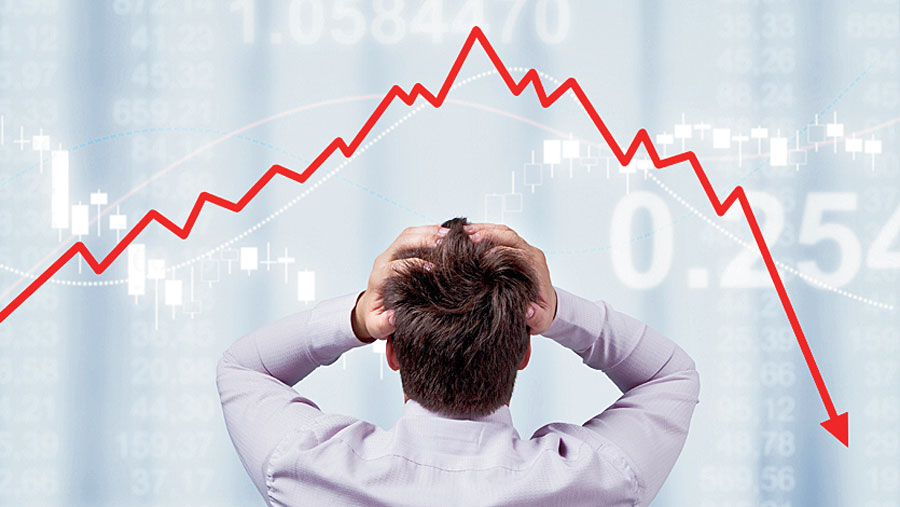This year closes with Omicron’s shadow upon the upcoming one. Amidst the unknown attributes of this new mutation of the coronavirus, economies are being tested by high inflation, impending withdrawal of easy policies, and visible scars of the pandemic. It was the opposite last December. The year of the pandemic had ended on an optimistic note, with vaccine innovations brightening prospects of a gradual exit and return to normalcy. These expectations were, indeed, realized this year: countries grew out of their downturns and inoculations progressed in places fortunate enough to have sufficient vaccines, freeing spaces to handle the pandemic. At the same time, most of the apprehensions came true too. These, at the end of the year, have become pressing challenges for the global economy in 2022. A stock-taking shows how.
The foremost risk and uncertainties at the year’s beginning related to the virus’s trajectory; inter alia, new, deadlier variants and if these could resist the workable vaccines. While Omicron and its still-to-be-fully-understood lethality and vaccine-proofing inject uncertainty into the 2022 outlook, before that there was the Delta variant. The Delta wave caused serious damages to health, finances and the economy in India, where it originated, and elsewhere, on transmission. It still rampages in many countries, notably in ones with sufficiently vaccinated populations and severe incidence upon the unvaccinated.
Then, there were doubts about limited vaccine availabilities, unequal access and delays and obstructions in vaccination progress. These negative expectations were realized too. Recall India’s own stumbles and misjudgments before hitting a smooth path after mid-year; the anti-vaccine beliefs and hesitancy obstructing progress in a few advanced countries such as the US and those in Europe; and the scarcity of access in poor nations. These set back or delayed economic restorations in many countries and, worse, provided opportunities for virus mutations. By the year-end, the Omicron variant has returned the spectre of restrictions just when the world was looking to resume normal activities. Because restriction fatigue has set in, containing transmissions is more difficult, and several democracies are being tested by people’s refusal to cooperate with shutdowns and shut-ins. Assessing economic prospects is, consequently, much more uncertain.
Apprehensions that recoveries may falter also came true. World economic growth was forecast at 5.5% in January 2021, raised to 6% in July and mildly downgraded to 5.9% in October by the International Monetary Fund due to increasing concern about the loss of economic momentum from Delta variant’s negative impacts. Very recently, it said that the Omicron mutation is likely to reinforce a downgrade of its global economic outlook, which means further downward revisions. After July, the frequent revisions indicated uncertainty about economic outlooks of the major countries. For instance, growth forecasts for the US went up to 7% in July from 5.1% in January and climbed down to 6% in October; predictions for China and India were lowered from their April peaks of, respectively, 8.4% and 12.5% to 8% and 9.5% by the year-end.
The feared problems of economic policies have also ballooned into mega policy challenges for 2022. Inflation, which was a tentative surprise early this year and attributed to pandemic-related supply disruptions, is now the chief macroeconomic risk. Inflation resurgence across countries, especially the US, is testing understanding and, hence, the framing of appropriate responses by policy authorities. The price growth dynamics are varied across countries, while doubts about its true nature and the respective roles of demand and supply factors are considerable. This raises the stakes of misjudgment and consequent policy mistakes that could cause blowback. Omicron’s arrival has only made the interpretation of inflation more complex, which impacts future readings. Such uncertainties translate into varied guesses about monetary and fiscal tightening in the forthcoming months of 2022.
Withdrawing policy support is not easy when there’s an urgency to redress the wounds caused by pandemic-induced recession. Feared damages on this count became increasingly visible in the course of the year as is evident from reports and research about business closures, job losses and raised unemployment, income shrinkages, and increased poverty across countries, including in India. Mitigating losses of vulnerable households and firms is harder when inflation eats into buying and spending capacities or consumption. Even advanced countries that gave handsome fiscal support face incomplete recovery of the labour market; a shrunk pool of workers has created ambiguities about this supply shock being permanent or temporary. The bargain vis-à-vis growth has become more delicate and complex.
These uncertainties will dominate policy attention next year; as will the resultant reactions to any change. This environment is more difficult to interpret compared to the simpler one faced one year ago; it was more binary then — health versus livelihood choices. In comparison, the trade-offs are more demanding, the pathways challenged by guesswork and caution than clarity, while the price of errors is high. Recouping growth, those of the past as well as enduring losses, while checking inflation to prevent counterproductive effects setting in is difficult even in normal times. It’s more intricate and riskier in the context of a pandemic, which is untested terrain. With Omicron’s addition, these are the legacy challenges for 2022.
Renu Kohli is a macroeconomist










